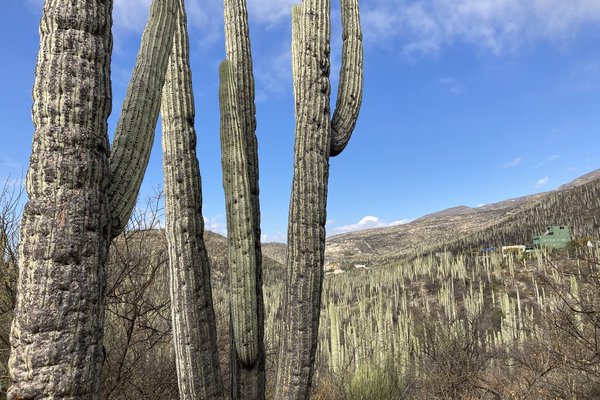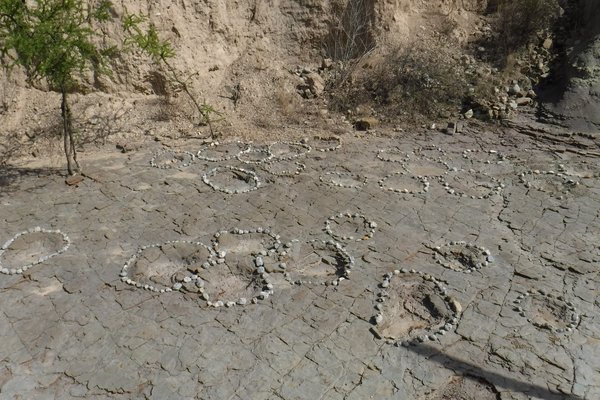Mexico
Tehuacán-Cuicatlán Valley
Tehuacán-Cuicatlán Valley: originary habitat of Mesoamerica is a semi-arid area recognized for its remarkable level of biological diversity and precolonial water management system.
Botanically, it is of special significance for its 86 species of cacti and the existence of ‘cacti-forests’. The diverse fauna includes threatened amphibian and bird species such as the threatened Green Macaw. The arid conditions led to early plant domestication and the development of water management features.
Community Perspective: The easiest component to visit is the Botanical Garden "Helia Bravo Hollis", where you can see many species of cacti (and even stay overnight, as Clyde did). The surrounding area also shows the ‘cacti-forests’. Sinuhe has described other possibilities as well, and Frédéric did a recommended 3-day tour.
Site Info
Official Information
- Full Name
- Tehuacán-Cuicatlán Valley: originary habitat of Mesoamerica (ID: 1534)
- Country
- Mexico
- Status
-
Inscribed 2018
Site history
History of Tehuacán-Cuicatlán Valley
- 2018: Advisory Body overruled
- ICOMOS advised Deferral for the cultural segment
- 2018: Inscribed
- Inscribed
- 2017: Referred
- 2017: Revision
- Successor to former TWHS Tehuacan-Cuicatlan Biosphere Reserve (2012)
- Type
- Mixed
- Criteria
- iv
- x
Links
- UNESCO
- whc.unesco.org
- Official
-
- comisariadozapotitlansalinas.com — Zapotitlan Salinas
- Related
-
- researchgate.net — Article on the Water Control Systems of the Tehuacan Valley.
All Links
UNESCO.org
- whc.unesco.org — whc.unesco.org/
Official Website
- comisariadozapotitlansalinas.com — Zapotitlan Salinas
Related Resources
- researchgate.net — Article on the Water Control Systems of the Tehuacan Valley.
Community Information
- Community Category
- Wildlife habitat: Flora
- Archaeological site: Pre-Columbian
Travel Information
Recent Connections
-
Mixed and Serial
-
Centres of Plant Diversity
MA4 Tehuacan-Cuicatlan Region - "A rema… -
Over 300 bird species
"There are 353 bird species recorded" (…
Connections of Tehuacán-Cuicatlán Valley
- Individual People
-
-
Visited by Alexander von Humboldt on his travels
In 1803, a German scientist, Baron von Humboldt, visited New Spain and studied Cuicatlán’s flora (AB ev)
-
- Geography
-
-
Canyons
The canyon of Tehuacán-Cuicatlán is a deep gorge surrounded by peaks more than 3,000 m high (AB ev)
-
- History
-
-
Historical Food Remains
fossilised maize
-
- Ecology
-
-
Cloud forest
presence of one of the few areas of cloud forest that are located in Mexico (wiki) -
Endemic Bird Species
The TCV is part of the Balsas Region and Interior Oaxaca Endemic Bird Area (EBA). There are 353 birds recorded, of which nine are endemic to Mexico (AB ev) -
Salt Flats
Zapotitlan Salinas -
Otters
neotropical otter (nom file) -
Jaguar habitat
jaguar or tiger (Panthera onca) (nom file) -
Critically endangered fauna species
Peromyscus mekisturus (Puebla deer mouse): only found in the area surrounding Tehuacán and is considered one of the rarest Mexican species as there are only two specimens registered (nom file) & Papaloapan chub (Notropis moralesi), a species of ray-finned fish - current status unknown, considered data deficient by IUCN -
Over 300 bird species
"There are 353 bird species recorded" (OUV)
-
- World Heritage Process
-
-
Natural sites filling gaps cited by IUCN
the TCV region has been identified in various past studies as a gap on the World Heritage List in terms of exceptional biodiversity values (IUCN ev) -
Mixed and Serial
-
- Human Activity
-
-
Salt
Cuthá or Quiotepec archaeological sites and Salinas Las Grandes located in the Zapotitlán-Cuicatlán component site reflect much later traces of political, religious and residential features, reflecting the lifestyle of the during the times the pottery and salt industry developed. Salt not only improved food, but also had a sacramental value (AB ev) -
Palm Groves
vegetation types of smaller extent such as palm groves or gallery forests (AB ev) -
Hand Paintings or Hand Prints
22F Cueva de las Manitas: Within the rock shelter, cave art is found with diverse zoomorphic and anthropomorphic motifs, such as feet soles and hands, from which this place gets its name. In the middle point of the rockshelter, the hands appear going upwards to the ceiling. (nom file) -
Irrigation and drainage
Several sites reflecting water irrigation processes (AB ev) - Purrón Dam is the largest prehistoric water management structure in Mesoamerica at 24 m high, 106 m wide, and 400 m in length (nom file) -
Pictographs
Puente Colosal in the component site of Zapotitlán-Cuicatlán is a tunnel formed by rock erosion, along which paintings have been discovered. Cueva de las Manitas in also in the Zapotitlán-Cuicatlán component (1200-1550 CE) is another rock shelter, where cave art illustrates several motifs related to humans and animals.
-
- Constructions
-
-
Notable Dams
Purrón Dam is the largest prehistoric water management structure in Mesoamerica at 24 m high, 106 m wide, and 400 m in length (nom file) -
Aqueduct
Xiquila Aqueduct, built around AD 400.
-
- WHS on Other Lists
-
-
World Biosphere Reserves
Tehuacán-Cuicatlán Biosphere Reserve (TCBR) -
Biodiversity hotspot
the Valley is noted as a global biodiversity hotspot (AB ev) -
Centres of Plant Diversity
MA4 Tehuacan-Cuicatlan Region - "A remarkable 70% of worldwide floral families are represented in the Valley, by at least one species, and the area is one of the main centres of diversification for the cacti family, which is highly threatened worldwide. "
-
- Timeline
-
-
Miocene
"Palynological assemblages from the Tehuacán Formation (TF), geochronologically dated as Middle Miocene (15.6 ± 0.4 Ma), provide evidence of a highly diverse flora that, at the generic level, is similar to the extant flora in the Tehuacán Valley. We propose that, during Miocene times, plant communities may have been formed of similar botanical elements to those seen today in the region, with some taxa adapted to semiarid conditions." -
Built in the 8th millennium BC
Between around 7800 and 3500 BCE, the nomadic settler groups introduced the domestication of maize (AB ev)
-
News
No news.
Recent Visitors
Visitors of Tehuacán-Cuicatlán Valley
- Alberto Rodriguez Gutierrez
- Alexander Lehmann
- Allegrazwindow
- Carlo Sarion
- Carlos Sotelo
- Cheryl
- Clyde
- Elis
- Els Slots
- Eva Kisgyorgy
- Frédéric M
- GeorgeIng61
- Iara
- Jana and Matt
- Jarek Pokrzywnicki
- Javier Coro
- Joel on the Road
- KarenBMoore
- Karito Vies
- Kasper
- Kbooth
- Kevin McFarland
- Kurt Lauer
- Ludvan
- Lukasz Palczewski
- Michael Ayers
- Mikko
- Mstrebl1990
- Paola Laura
- Paul Schofield
- Philipp Peterer
- puessergio
- Ralf Regele
- Roman Bruehwiler
- Sergio Arjona
- Shandos Cleaver
- Simonf
- Slavi
- Solivagant
- Stanislaw Warwas
- Szucs Tamas
- triath
- Walter
- Wojciech Fedoruk
- Zoë Sheng
Community Reviews
Show full reviews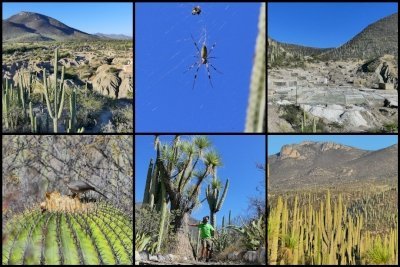
I visited this WHS in December 2021 and what was initially planned as quick visit due to COVID closures, turned out to be a great experience over three days. I had contacted a number of small hotels at Zapotitlan as well as a great local company called Bio Fan for more information on some hiking possibilities and to have further information whether the Helia Bravo Botanical Gardens were open since they had been closed for almost two years due to the pandemic.
After weeks with no positive reply, the day before heading towards Oaxaca from Puebla, we received good news: the botanical gardens were finally open on Christmas Eve, so we changed our initial plans and booked a very early guided tour with the friendly and knowledgable Bio Fan to Santa Ana Tecomavaca to spot the military macaws at sunrise (great with binoculars, much less for photography at least with a bridge camera) on the last day before heading to Oaxaca as it's quite on the way. We also did a shorter visit to a place known locally as El Bosque de los Sotolines which we had initially planned as Plan B should the Botanical Gardens be still closed as I wanted to make sure to see the endemic Pata de elefante or sotolin tree which is believed to be the oldest (800+ years old) in the region of Tehuacan. We simply parked our car close by and hiked slightly uphill. Next we headed to the Helia Bravo Botanical …
Keep reading 0 comments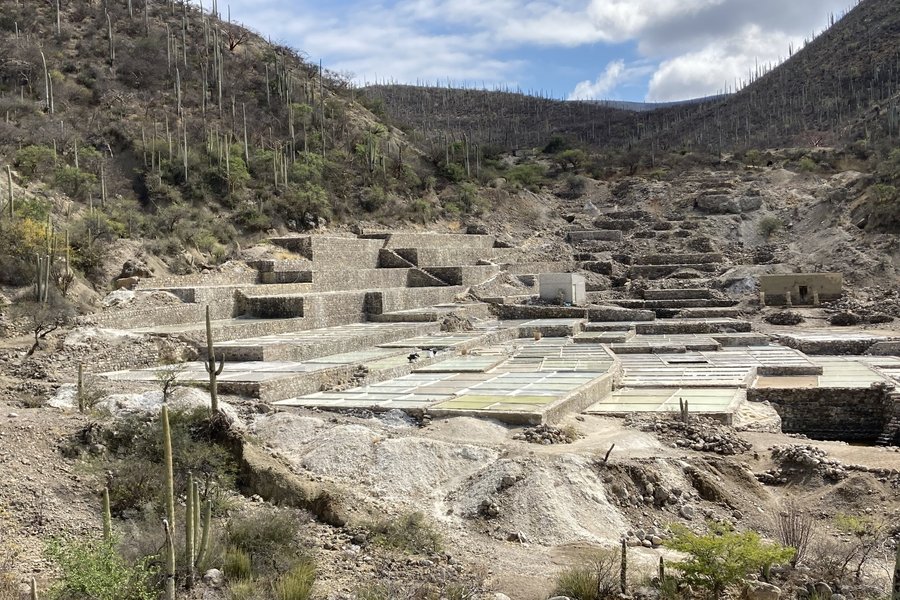
Time of visit: November 2021
Duration of visit: 2 hours
Mode of transportation: by rental car, en route from Puebla to Oaxaca
Review and experience
Tehuacan-Cuicatlan Valley features beautiful landscape full of cacti, particularly the unique single column cacti that reminded us of garden eels in an aquarium. We visited the Zapotitlán-Cuicatlán portion of the site and were so glad we made the relatively last minute decision to make this detour happen. Along the main highway connecting Puebla and Oaxaca, we really didn't see many cacti, even as we were approaching the site (driving south from Puebla). However, a few minutes into our turn into the valley, it's as if the landscape just exploded. There were so many. Despite being a desert, it's truly a forest.
Due to COVID, the specific site mentioned in several other prior reviews - Helia Bravo Hollis Garden - was closed. Instead, we visited the nearby Las Salinas Grandes salt mine. It's directly off the road, and as we arrived during the day, there was a worker there who gave us a lovely tour of the facilities (for a very reasonable fee). We learned that this particular salt farm has been continuously functioning for the past 600 years, and it was interest to walk on the pond, taste the salt water (don't recommend... it was gross and putrid) and finished salt (recommend tasting!). We left the tour grateful to have had a brief taste of the cultural aspect of this …
Keep reading 0 comments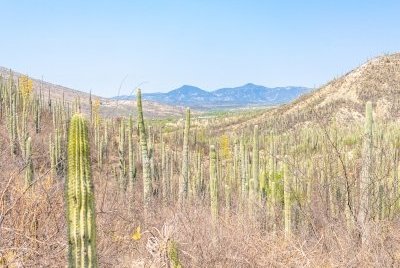
Frederic M has done what I believe is the best way to really appreciate the OUV of this site--taking a multi-day tour. This was what I hoped of doing when I visited Mexico, but unfortunately, I did not have enough time and resources and I was traveling with my friend who was not too inclined to do such tours. Date of Visit: April 2019
Description:
The nomination file indicates that the Tehucan-Cuicatlan Valley is an “arid or semi-arid zone with the richest biodiversity in all of North America.” It adds that the valley occupies an expansive area between Oaxaca and Puebla, which can be accessed through the scenic 135D highway. The nomination file also said that “it is one of the main centers for the diversification of the cacti family”, and “it harbors the densest forests of columnar cacti in the world”. As a biologist by education, this is the aspect of the site that I focused on.
Experience:
Taking the single or multi-day tours was already out of the question given the above reasons. Hence, I had to choose properties within the core zone that were accessible for travelers with limited time. Reading through the nomination file and other sources, the following properties were mentioned:
- Parque Ecoturistico Turritelas
- Salinas Las Grandes
- Helia Bravo Hollis Botanical Garden
Sinuhe mentioned the Helia Bravo Hollis Botanical Garden in his review. Just to feel assured, I contacted the Comision Nacional de Areas Naturales …
Keep reading 0 comments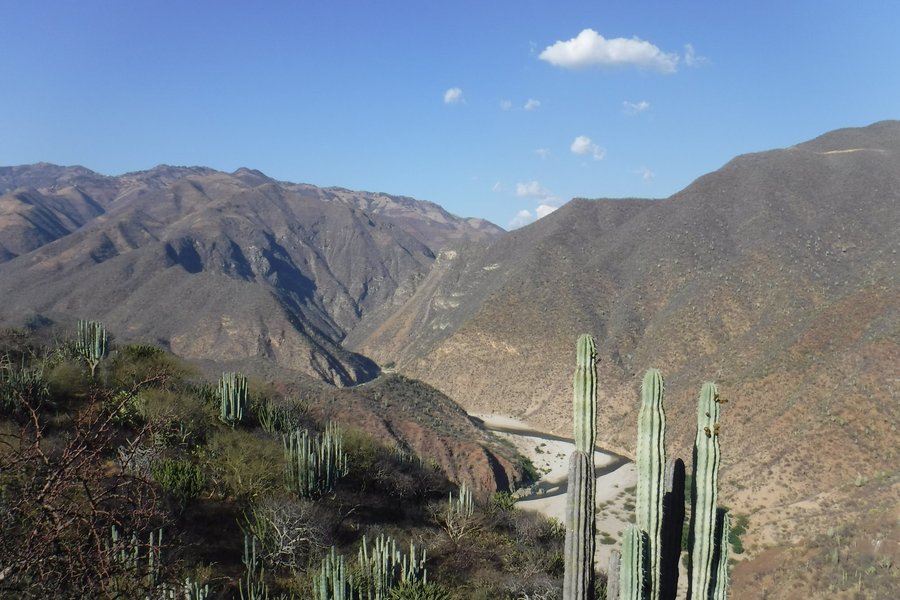
Previous review by Sinuhe Reyrub is really good, but I though I could add some information here as my first review.
When planning my visit there I though it would be easy to enjoy the site due to its convenient location between Puebla and Oaxaca. But I soon realized it would be hard and time-consuming to visit this biosphere reserve on public transport. I finally found that ecotourism tour operator based in Oaxaca offering tours there (http://tierraventura.com/ruta-tehuacan-cuicatlan/).
We chose a three-day tour in the reserve starting and ending in Oaxaca, and we had a really great time. It was probably much more expensive than visiting on our own, but it was easy, nice and very instructive. I think this is the best way to visit the reserve if you rely on public transport. We visited (and stayed in) the amazing botanical garden (already well described in the previous review). The diversity of cacti there is impressive. We also spend some time in San Juan Rayas to see the countless fossils and dinosaurs footprints. Around those two regions, the landscape of cacti covered mountains is really beautiful, especially at sunset when the light gives a deeper colour to the canyons. We hiked a bit around and spotted birds, lizards and a fox at night.
On the second day, they took us to Santiago Quiotepec, a very small and remote village. From there, we hiked a nearby mountain to see some ongoing archeological works and enjoy once more the superb landscape. We …
Keep reading 0 comments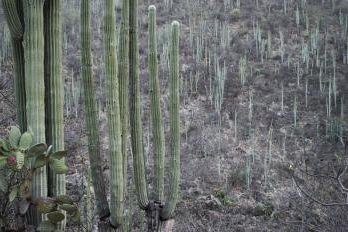
This will be an "easy" place to know if you're planning travel to Mexico and visit several World Heritage sites: site is halfway between Mexico City and Oaxaca. Now, not everything is as simple as you think.
If you’re travelling from Mexico City to Oaxaca, passing through the city of Tehuacan, a classic route is take Highway-135 D (Cuacnopala-Oaxaca) until arriving Oaxaca; you will surely see beautiful landscapes and a small portion of the reserve, but you will not cross the heart. So, starting today, recommend take the difficult local Highway-980 (Tehuacan-Coxcatlan-Teotitlan-Cuicatlan-Oaxaca). Of course, the difference in hours from the city of Tehuacan to Oaxaca, on this local road, is 3 or 4 hours more; so once you're going back to Mexico City, you could take the "fast route".
As a Mexican I can tell this is probably one of the most beautiful and interesting biosphere reserves around the country, and probably after Montes Azules and Zoque Jungle, the place that struck me most in the country, (well, I don't know Calakmul yet), anyway, can be very confusing if you don't bring an adequate travel plan. The place doesn't shine because of its infrastructure, promotion or knowledge throughout the country, which I believe has allowed it to be kept in a genuine and authentic way.
There are no defined routes in its nearly 500,000 ha, and there are too many places to see. I will focus on those I have visited, and are within the core area considered to be …
Keep reading 0 comments
